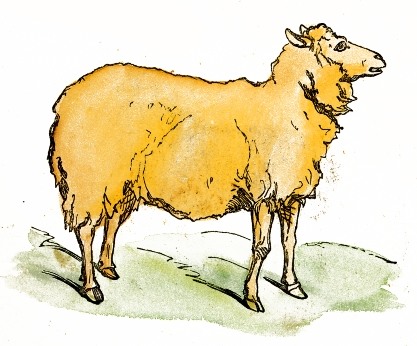133 lines
3.6 KiB
Markdown
133 lines
3.6 KiB
Markdown
# Abraham
|
|
|
|
_Guide your users in the one true path._
|
|
|
|

|
|
|
|
Abraham injects dynamically-generated [Shepherd.js](http://github.hubspot.com/shepherd/docs/welcome/) code into your Rails application whenever a user should see a guided tour. Skip a tour, and we'll try again next time; complete a tour, and it won't show up again.
|
|
|
|
* Define tour content with simple YAML files, in any/many languages.
|
|
* Organize tours by controller and action.
|
|
* Plays nicely with Turbolinks.
|
|
|
|
## Requirements
|
|
|
|
Abraham needs to know the current user to track tour views, e.g. `current_user` from Devise.
|
|
|
|
## Installation
|
|
|
|
Add `abraham` and its JavaScript dependencies to your Gemfile:
|
|
|
|
```
|
|
gem 'abraham'
|
|
|
|
source 'https://rails-assets.org' do
|
|
gem 'rails-assets-shepherd.js', '~> 1.8'
|
|
gem 'rails-assets-js-cookie', '~> 2.1'
|
|
end
|
|
```
|
|
|
|
Then run:
|
|
|
|
```
|
|
$ bundle install
|
|
$ rails generate abraham:install
|
|
```
|
|
|
|
Require `abraham` in `app/assets/javascripts/application.js`
|
|
|
|
```
|
|
//= require abraham
|
|
```
|
|
|
|
Require a Shepherd.js CSS theme in `app/assets/stylesheets/application.scss`
|
|
|
|
```
|
|
//= require "shepherd.js/dist/css/shepherd-theme-default"
|
|
```
|
|
|
|
Shepherd.js provides the following themes:
|
|
|
|
- `shepherd-theme-arrows`
|
|
- `shepherd-theme-arrows-fix`
|
|
- `shepherd-theme-arrows-plain-buttons`
|
|
- `shepherd-theme-dark`
|
|
- `shepherd-theme-default`
|
|
- `shepherd-theme-square`
|
|
- `shepherd-theme-square-dark`
|
|
|
|
Update `config/abraham.yml` if you choose a different theme:
|
|
|
|
```
|
|
defaults: &defaults
|
|
:default_theme: 'shepherd-theme-arrows'
|
|
```
|
|
|
|
Tell Abraham where to insert its generated JavaScript in `app/views/layouts/application.html.erb`, just before the closing `body` tag:
|
|
|
|
```erb
|
|
<%= abraham_tour %>
|
|
</body>
|
|
</html>
|
|
```
|
|
|
|
## Defining your tours
|
|
|
|
Define your tours in the `config/tours` directory. Its directory structure should mirror your application's controllers, and the tour files should mirror your actions/views.
|
|
|
|
```
|
|
config/
|
|
└── tours/
|
|
└── blog/
|
|
│ ├── show.en.yml
|
|
│ └── show.es.yml
|
|
└── articles/
|
|
├── index.en.yml
|
|
├── index.es.yml
|
|
├── show.en.yml
|
|
└── show.es.yml
|
|
```
|
|
|
|
NB: You must specify a locale in the filename, even if you're only supporting one language.
|
|
|
|
### Tour content
|
|
|
|
A tour is composed of a series of steps. A step may have a title and must have a description. You may attach a step to a particular element on the page, and place the callout to the left, right, top, or bottom.
|
|
|
|
```yaml
|
|
intro:
|
|
steps:
|
|
1:
|
|
text: "Welcome to your dashboard! This is where we'll highlight key information to manage your day."
|
|
2:
|
|
title: "Events"
|
|
text: "If you're participating in any events today, we'll show that here."
|
|
attachTo:
|
|
element: ".dashboard-events"
|
|
placement: "right"
|
|
3:
|
|
title: "Search"
|
|
text: "You can find anything else by using the search bar."
|
|
attachTo:
|
|
element: ".navbar-primary form"
|
|
placement: "bottom"
|
|
```
|
|
|
|
Abraham takes care of which buttons should appear with each step:
|
|
|
|
* "Later" and "Continue" buttons on the first step
|
|
* "Exit" and "Next" buttons on intermediate steps
|
|
* "Done" button on the last step
|
|
|
|
### Testing your tours
|
|
|
|
Abraham loads tour definitions once when you start your server. Restart your server to see tour changes.
|
|
|
|
If you'd like to run JavaScript integrations tests without the Abraham tours getting in the way, clear the Abraham configuration in your test helper, e.g.
|
|
|
|
```
|
|
Rails.application.configure do
|
|
config.abraham.tours = {}
|
|
end
|
|
```
|